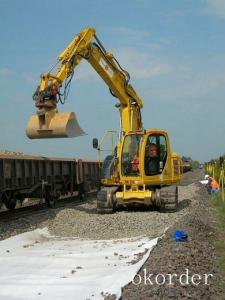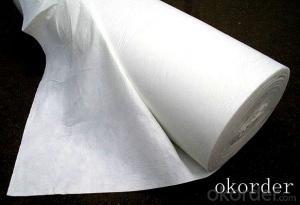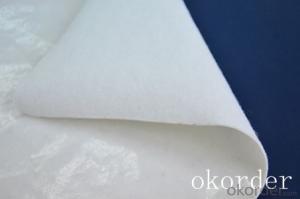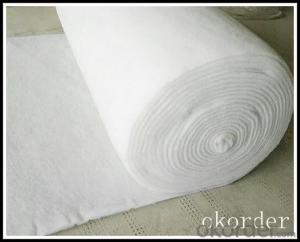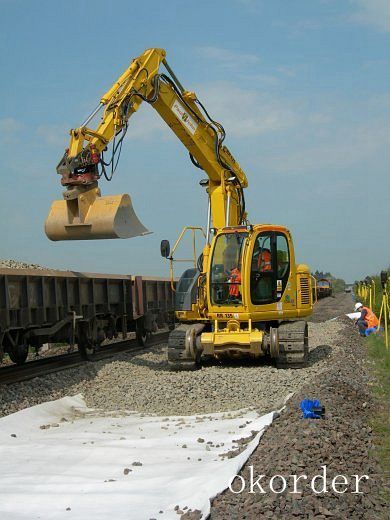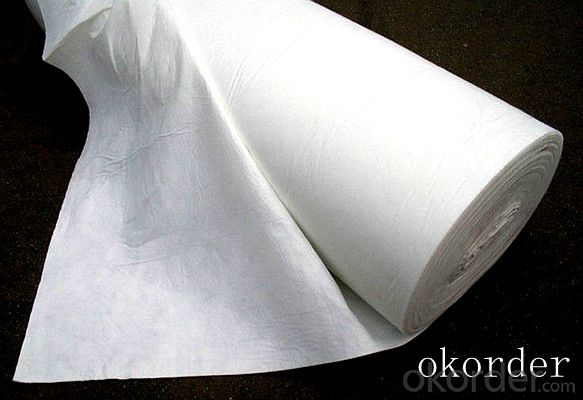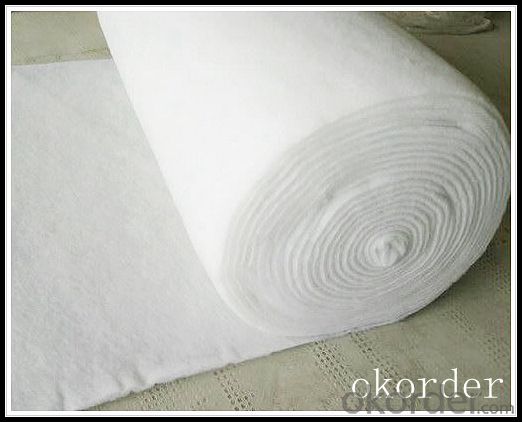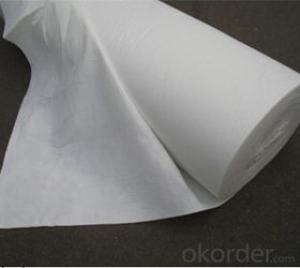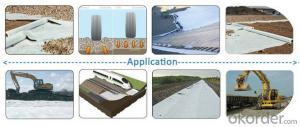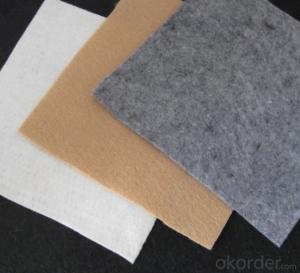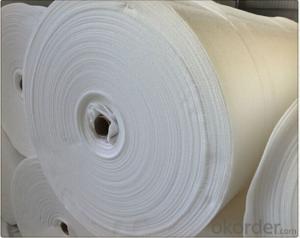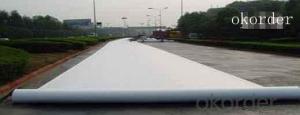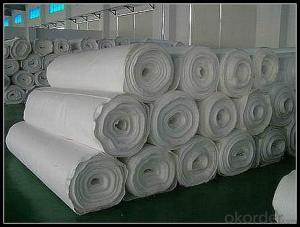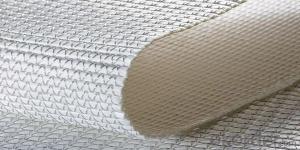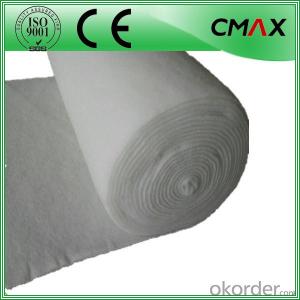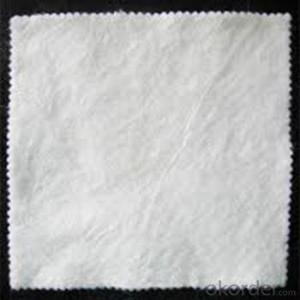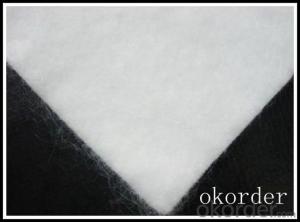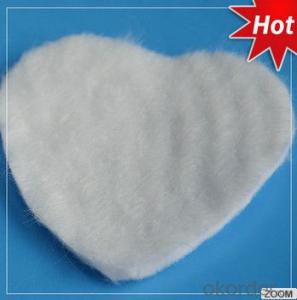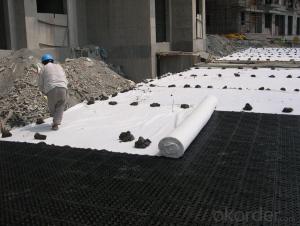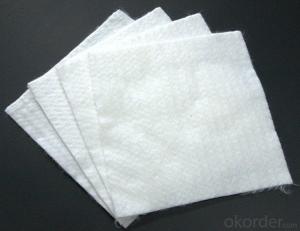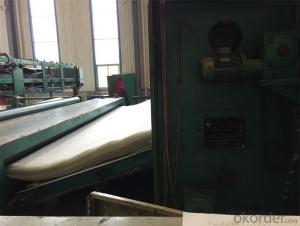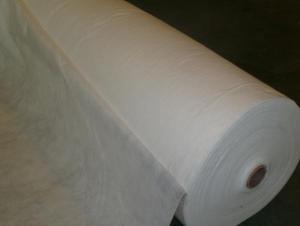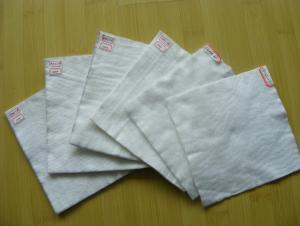Copper Geotextile Civil Non-Woven Geotextiles Industrial Nonwoven Fabric for Railway
- Loading Port:
- China main port
- Payment Terms:
- TT OR LC
- Min Order Qty:
- 1000 m²
- Supply Capability:
- 1000000 m²/month
OKorder Service Pledge
OKorder Financial Service
You Might Also Like
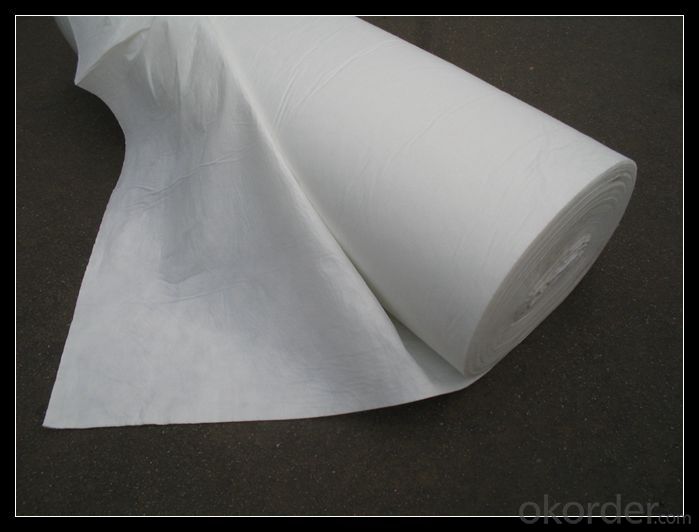
Non Woven Geotextile Introduction:
Nonwoven geotextiles are manufactured from the extrusion of polypropylene fibres which are then laid down on a manufacturing "bed" and then needle punched to entangle the fibres such that a dimensionally stable product is formed. Some additional thermal treatment is then applied to further improve the strength of the geotextile. Because of this manufacturing process non-woven geotextiles are generally best used in applications of drainage, filtration and protection
Assembling is possible at almost any weather conditions. There are no big difficulties while the laying out of the material due to the following features: material rolls are not big, which reduces transportation and storage costs as well as labor costs; the material does not water permeable; while application in humid conditions the roll weight does not change; it is not permeable for plant roots, is a good protection from gnawing animals; acid and alkali resistant, etc. the material exactly repeats the base molding and does not require any fixing and fastening joints.
Our Service
1.On a regular basis or as per your request,we entrust national testing agencies to conduct quality inspections
2. Strictly in accordance with the ISO9001-2008 international quality system standard,we monitor and manage the whole process throughout production,quality testing,and measurement to ensure product quality
3. For quality-related construction delay or substandard construction(except for damage or losses due to customer’s responsibility or irresistible natural disasters),we have refunding,replacement,and repair services.We will respond to customers’ feedbacks on quality issues within 24 hours.
After-sales service
1.In order to provide customers with comprehensive technical support,we will provide technical and other related information upon request in a timely manner.
2.In required,we will appoint specialized technicians to the construction site to give technical trainings to construction people,and offer technical guidance throughout the whole construction process.
3.For damage due to shipment and delivery,after we receive the complaint,we will check the issure through provided pictures and videos.If our responsibility is confirmed,we wil offer free replacement.
4.When the construction is completed,as your request,our technical staff may participate in the final acceptance.
FAQ:
Q: What kind of payments does jenor support?
A: T/T, L/C, Cash are accepted.
Q: Do you charge for the samples?
A: Accordeing to our company policy, the samples are free, we only charge the freight fee. And we will return the freight fee during the next order.
Q: Can you produce according to customers' design?
A: Sure, we are professional manufacturer, OEM and ODM are both welcome.
Q: Do you have other products?
A: Yes, please check the pictures:
- Q: Principle of drainage pipe geotextile
- Principle of drainage pipe geotextile
- Q: What are the specifications for geotextiles in railway projects?
- The specifications for geotextiles in railway projects generally include requirements for strength, durability, permeability, and filtration. These geotextiles should have sufficient tensile strength to withstand the dynamic loads imposed by trains and maintain their integrity over time. They should also be resistant to degradation caused by UV exposure, chemical exposure, and biological factors. The permeability of geotextiles is crucial to ensure proper drainage and prevent water accumulation, which can lead to instability. Additionally, the geotextiles should possess excellent filtration properties to prevent the migration of fine particles and maintain the stability of the railway subgrade.
- Q: Can the mortar be made directly on the composite geomembrane of the reservoir?
- Yes, as long as there is geotextile can hold mortar I am the production of geotextile materials
- Q: Can geotextiles be used for reinforcement in landfills?
- Yes, geotextiles can be used for reinforcement in landfills. They are often used as a separation layer between different soil layers, providing stability and preventing the mixing of materials. Geotextiles also help in enhancing the overall strength and performance of the landfill structure by distributing loads and reducing the potential for erosion or piping.
- Q: Is there a filament geotextile manufacturer? Introduce the main performance ah
- Our road embankment reinforcement project, for example, the construction of the road first focus on the quality of the road followed by the use of these two problems, and Hongxiang new material filament geotextile just to solve. In order to improve the smoothness of the road to prevent the occurrence of reflective cracks and play the role of waterproof layer. Laying and impregnating the asphalt between the base layer and the surface layer to form the filament geotextile - asphalt interlayer. You can see the specific understanding of the user name
- Q: Bought a roll of geotextiles soon run out, do not know if there is nothing to replace the geotextile material more
- I use the plastic cap, but unfortunately has been buried in the basin, or else, then open up the chart, the cap around the cut a few gap, the statement is only suitable for the bottom of only a hole in the pot, its role and tile the same , But better than the tile effect, a lot of holes that kind of plastic flower pots I generally do not pad things, feeling will not drain a lot of soil and nutrients.
- Q: What are the environmental benefits of using geotextiles?
- Geotextiles offer several environmental benefits, including erosion control, soil stabilization, and improved water quality. They prevent soil erosion by reinforcing and stabilizing slopes, reducing the risk of landslides and sediment runoff into water bodies. Geotextiles also promote vegetation growth by retaining moisture and nutrients in the soil, aiding in reforestation and ecological restoration efforts. Additionally, they can filter contaminants from stormwater runoff, improving water quality and protecting aquatic ecosystems. Overall, geotextiles provide sustainable solutions for various environmental challenges.
- Q: Can geotextiles be used in geogrid reinforced soil walls?
- Yes, geotextiles can be used in geogrid reinforced soil walls. Geotextiles are often used as a separation layer between the soil and the geogrids to prevent soil loss and provide additional reinforcement to the wall structure.
- Q: Specification for Lap Length of Geotextile with Two Cloth
- 10 cm or so can be, collar Xiang new materials for your answer
- Q: How do geotextiles help in reinforcing soil?
- Geotextiles help in reinforcing soil by providing a stable support system. They act as a barrier, distributing loads and reducing stress on the soil. Geotextiles also improve soil drainage, prevent erosion, and promote soil stability, ultimately enhancing the overall strength and durability of the soil.
Send your message to us
Copper Geotextile Civil Non-Woven Geotextiles Industrial Nonwoven Fabric for Railway
- Loading Port:
- China main port
- Payment Terms:
- TT OR LC
- Min Order Qty:
- 1000 m²
- Supply Capability:
- 1000000 m²/month
OKorder Service Pledge
OKorder Financial Service
Similar products
Hot products
Hot Searches
Related keywords
